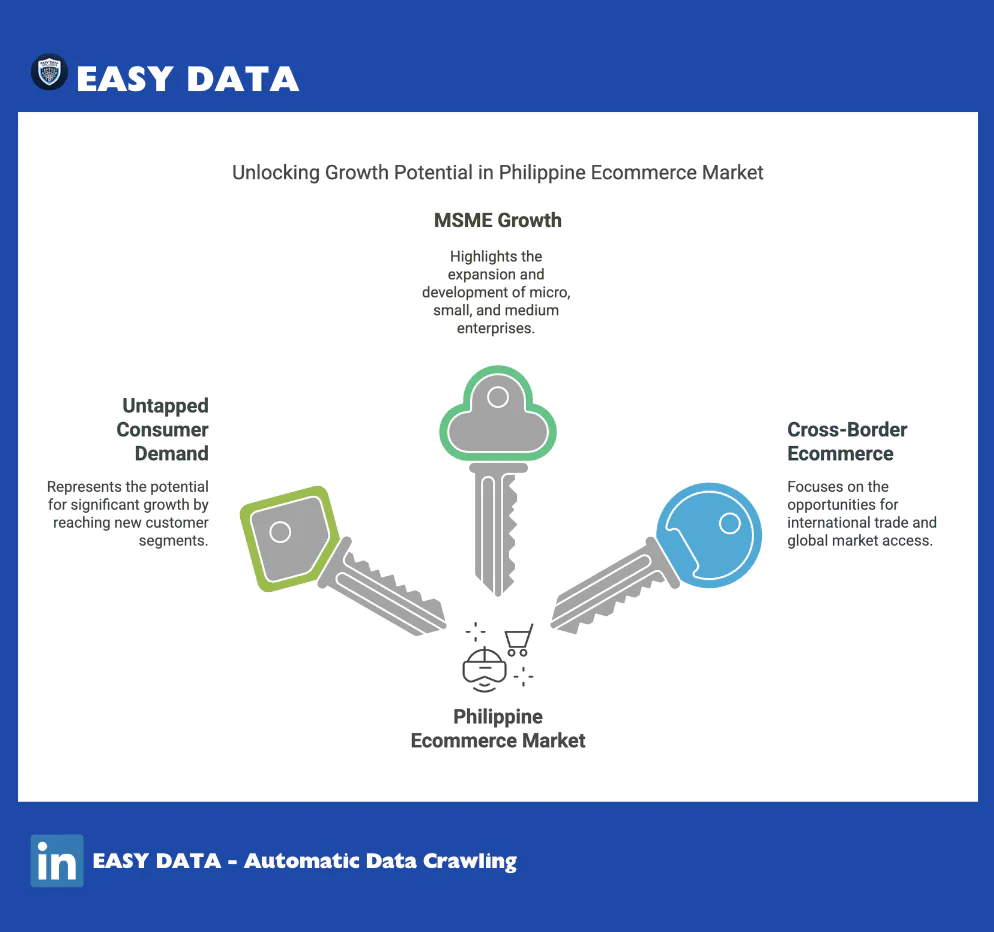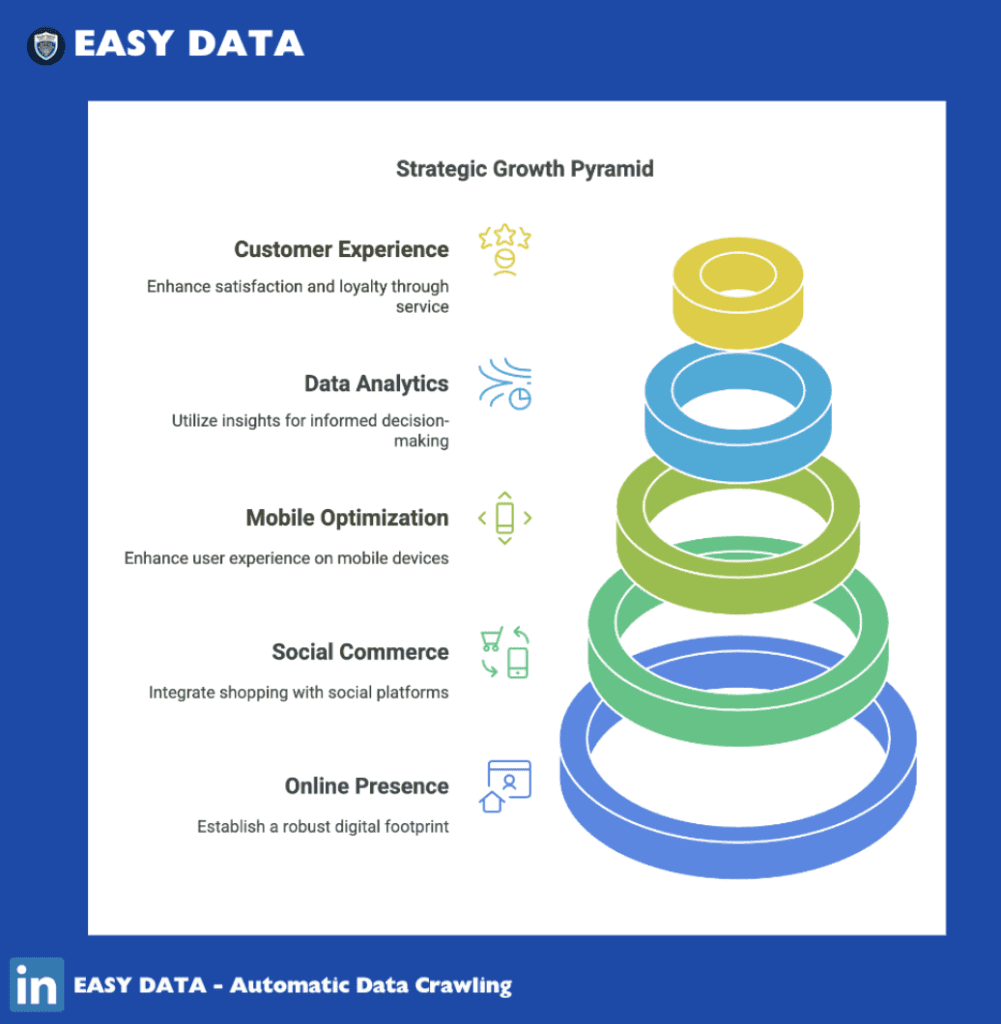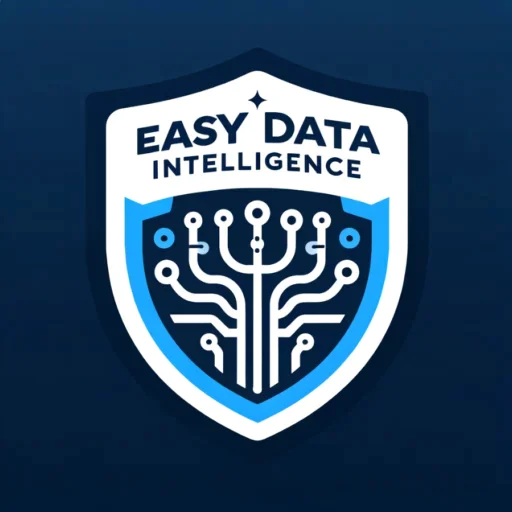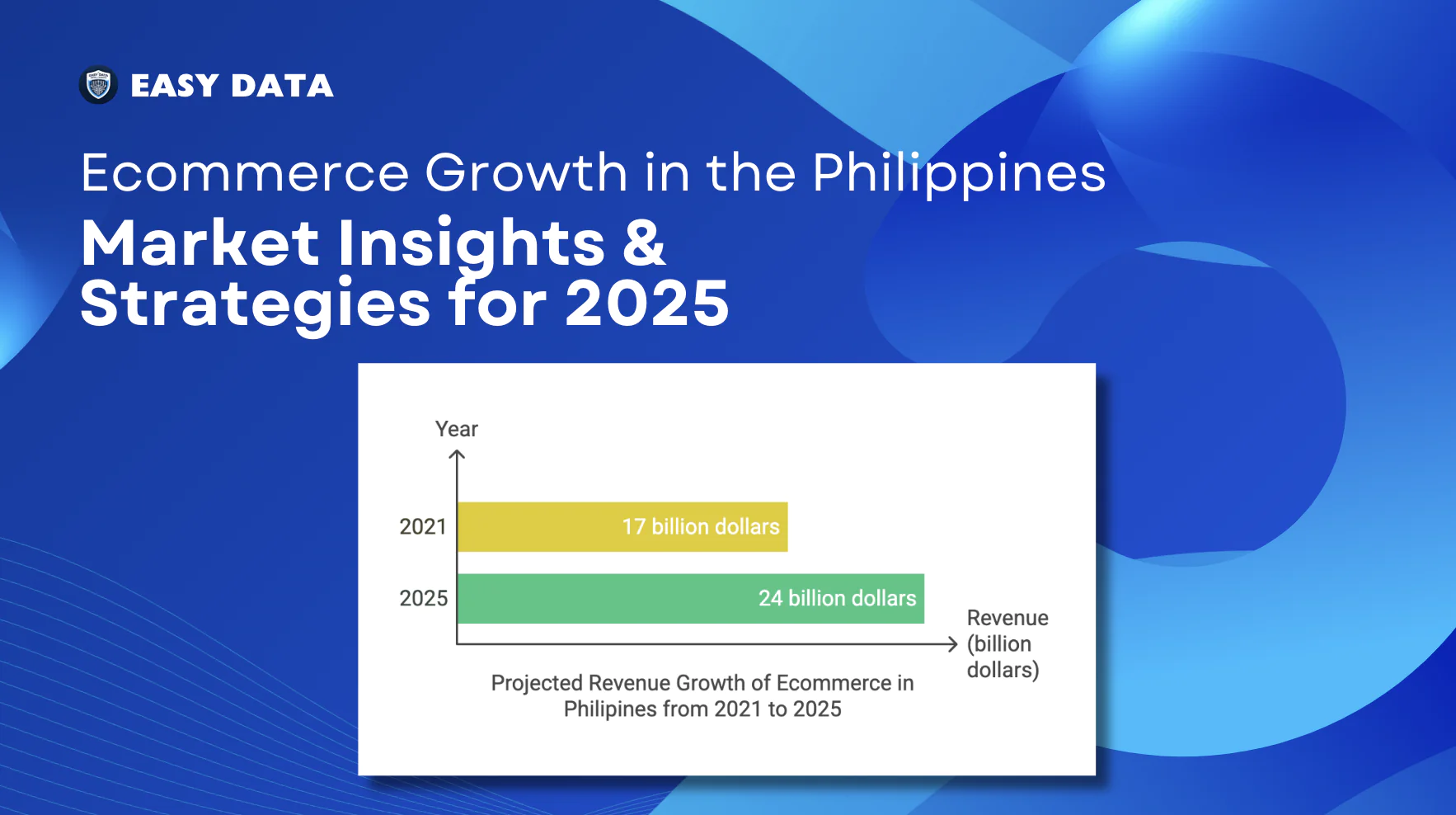The ecommerce growth in the Philippines is accelerating, reshaping how businesses and consumers engage in digital transactions. As one of Southeast Asia’s fastest-growing digital markets, this trend presents unparalleled opportunities and challenges for businesses. If you’re not leveraging this boom, you’re missing a game-changing chance to scale your business in this thriving sector.
Market Overview
Additional Insight
According to We Are Social’s Digital 2025 Report:
- 91% of the population in the Philippines owns a mobile phone, with 85% using smartphones to access the internet.
- Over 76 million active social media users, with Facebook and YouTube dominating as the most-used platforms.
- Ecommerce adoption has grown by 60%, driven by increased online grocery shopping and mobile wallet usage.
- Filipinos spend an average of 4 hours daily on social media, heavily influencing their online shopping behavior.
Market Insights
The ecommerce growth in the Philippines is projected to grow to $24 billion by 2025, up from $17 billion in 2023. This rapid growth is fueled by increasing internet penetration, improved logistics, and the widespread adoption of digital payment solutions. With more than 76 million Filipinos accessing the internet—most through mobile devices—the potential for ecommerce remains vast and largely untapped.
Key Statistics
- Internet Penetration: Over 70% of Filipinos are active internet users.
- Mobile Commerce: Mobile devices account for more than 70% of online shopping traffic.
- Social Media Usage: The Philippines ranks among the top countries globally for time spent on social media, averaging over four hours daily.
For businesses looking to leverage this potential, Easy Data offers cutting-edge tools for scraping and analyzing market data, empowering ecommerce enablers and researchers with actionable insights.
Key Drivers of Ecommerce Growth
Further Reading
Check out Ecommerce Nation’s Guide to understand key strategies for penetrating the Philippine ecommerce market.
1. Digital Transformation and Internet Connectivity
The ecommerce growth in the Philippines is fueled by significant strides in digital transformation. The rise of affordable smartphones and improvements in mobile network coverage have enabled millions of Filipinos to access the internet. This digital revolution has opened up new avenues for ecommerce growth, particularly in rural areas where physical retail infrastructure is limited.
2. Social Media’s Influence on Shopping
Social commerce is a major driver of ecommerce growth in the Philippines. Platforms like Facebook, Instagram, and TikTok have become key channels for discovering and purchasing products. Many small businesses use these platforms as their primary storefronts, leveraging features like Facebook Shops and Instagram Checkout.
3. Adoption of Digital Payment Solutions
Filipinos are increasingly adopting digital payment methods such as GCash, PayMaya, and bank transfers. These payment systems have significantly improved trust in online transactions, reducing the reliance on cash-on-delivery (COD), which has long been a barrier to ecommerce growth.
4. Improved Logistics and Delivery Services
Local and international logistics providers have enhanced their operations to support the growing ecommerce market. Companies like Lalamove, GrabExpress, and J&T Express have made fast and reliable delivery possible, even in remote areas.
For deeper insights into the logistics and ecommerce landscape, Easy Data offers comprehensive market research solutions to help businesses optimize their strategies.
Opportunities in the Philippine Ecommerce Market
Outbound Resources for Growth
For insights into the Philippine ecommerce market, explore the comprehensive Ecommerce Southeast Asia Report. It highlights regional trends and offers actionable strategies for businesses.

1. Untapped Consumer Demand
Despite the rapid ecommerce growth in the Philippines, significant room for expansion remains. Categories such as groceries, electronics, and fashion are still underpenetrated compared to other Southeast Asian markets like Singapore and Malaysia.
2. MSME Growth
Micro, small, and medium enterprises (MSMEs) play a vital role in the Philippine economy. As more MSMEs embrace digital platforms, the demand for ecommerce support services—such as digital marketing, data analytics, and inventory management—is rising. Easy Data can assist these businesses by providing tailored data scraping and analysis tools to uncover hidden opportunities.
3. Cross-Border Ecommerce
Filipino consumers have shown a growing interest in cross-border shopping, particularly for unique or hard-to-find items. Platforms like Amazon, Shopee, and Lazada have facilitated cross-border transactions, making international products more accessible. Easy Data’s tools can help businesses identify cross-border trends and optimize their product offerings.
Challenges Facing Ecommerce in the Philippines
External Perspectives
Learn how global businesses navigate similar challenges by visiting Harvard Business Review for case studies and expert advice on ecommerce transformation.
1. Payment and Trust Issues
While digital payments are gaining traction, COD remains a preferred option for many shoppers. Building trust in digital transactions is essential to encourage more widespread adoption of cashless payments.
2. Infrastructure Limitations
While logistics have improved, challenges remain in ensuring timely deliveries to rural areas. Poor infrastructure in remote regions can hinder the ecommerce growth in the Philippines.
3. Competition Among Platforms
With several players vying for market dominance, competition among ecommerce platforms is intense. Businesses must differentiate themselves through unique value propositions, competitive pricing, and superior customer experiences.
Easy Data offers data-driven insights that enable businesses to overcome these challenges, refine their strategies, and gain a competitive edge.
Future Trends in Philippine Ecommerce
Global Trends
Visit McKinsey’s Insights for global ecommerce trends that can influence the Philippine market.
1. Rise of Quick Commerce
Consumers are increasingly demanding faster delivery times. Quick commerce—where products are delivered within hours—is expected to become a standard offering, especially in urban areas.
2. Growth of Livestream Shopping
Livestream shopping is gaining traction, with sellers using platforms like TikTok and Shopee Live to showcase products and engage with customers in real time.
3. Sustainable Ecommerce Practices
As awareness of environmental issues grows, consumers are gravitating toward brands that prioritize sustainability. Packaging innovations and eco-friendly practices are likely to become essential for businesses.
4. Integration of AI and Automation
AI-powered tools are revolutionizing the ecommerce landscape by enhancing customer experiences, optimizing supply chains, and personalizing marketing efforts.
For a detailed guide on leveraging these trends, explore Easy Data to see how AI-powered solutions and data scraping can elevate your ecommerce strategy.
How to Leverage the Boom

1. Build a Strong Online Presence
Whether you’re a large brand or a small business, having a robust online presence is essential. Invest in a professional website and establish a presence on popular platforms like Lazada and Shopee.
2. Focus on Social Commerce
Leverage social media platforms to engage with your audience. Use features like live selling, chatbots, and social media ads to drive traffic and conversions.
3. Optimize for Mobile
With mobile devices dominating online traffic, ensure your website and apps are mobile-friendly to provide seamless user experiences.
4. Embrace Data Analytics
Data-driven decision-making is key to staying competitive. Platforms like Easy Data can help you gather insights into customer behavior, market trends, and competitor performance.
5. Prioritize Customer Experience
Deliver exceptional customer service by offering fast deliveries, easy returns, and personalized recommendations.
Conclusion
The ecommerce growth in the Philippines presents an incredible opportunity for businesses that can adapt and innovate. With a young, digital-savvy population and increasing digital adoption, the market is primed for expansion. Whether you’re a local entrepreneur or an international brand, now is the time to establish a strong presence in this rapidly growing sector.
To stay ahead, invest in the right tools and strategies. Visit Easy Data for cutting-edge data analytics to help optimize your ecommerce strategy and gain a competitive edge. Don’t miss out on this booming market—the time to act is now


Leave a Reply